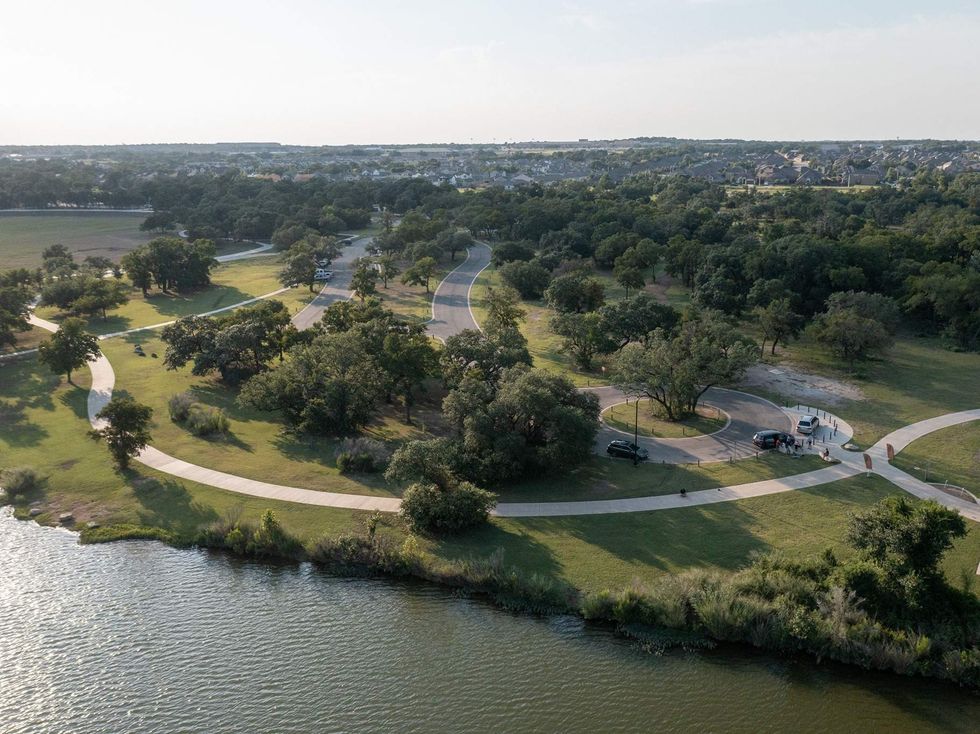History of Austin
The legend of Mount Bonnell is a steep climb through Austin's history

"Four miles above the city, upon the east side of the river, is a high peak called Mount Bonnell. From the top of the mountain there is a perpendicular precipice seven hundred feet down to the water. The prospect from the top of this mountain is one of the grandest and loveliest in nature."
The above description was written by George Bonnell in The Topography of Texas, a book commissioned by the city of Austin and published in April 1840. It is believed — but not confirmed — that Mount Bonnell is named for George Bonnell, who traveled to Texas with a group of volunteers recruited to fight the Texas War of Independence. After the war, he moved to Austin to become the Commissioner of Indian Affairs for the Republic of Texas.
In addition to being a journalist, a rabble-rouser, and colorful character (who was once rumored to have bitten off a man's nose during a fistfight), Bonnell was a gifted spokesman captivated by the beauty of Austin. "Cities are growing up, in places which a few years ago were only inhabited by wild beasts and wilder savages, and civilization and refinement are rapidly taking possession of the wilderness bringing it into the dominion of man," he once wrote of the Lone Star State.
Bonnell was shot and killed by a Mexican soldier in 1842 during the Santa Fe Expedition, but his memory lives on in this local landmark.
Notable Facts
Mount Bonnell has indeed become a top destination in the Capital City. Located in West Austin, just down a winding street from The Contemporary Museum of Art at Laguna Gloria and Mayfield Park, the peak has become a popular attraction for both locals and tourists alike.
After parking on the hillside, visitors can climb the 102 stone steps to the top for one of the best views in town. Rising 775 feet above sea level, the park offers unparalleled views of the Colorado River (also known as Lake Austin), surrounding homes, and the city skyline. Mount Bonnell is part of the Balcones Fault Escarpment, and the park is made up of limestone rock with cedar, live oak, and mountain laurel vegetation.
The city park above Mount Bonnell belonged to the Covert family and was deeded by the family to the city in 1939. Mount Bonnell and Covert Park were designated in 1969 as a landmark by the State of Texas, and in 2015 by the National Register of Historic Places. Today, there are picnic tables in the pavilion area of the park and it has become a popular place for gatherings, as well as viewing dramatic sunrises and sunsets from the peak.
Historical Visitors to Mount Bonnell
Before Austin became a booming city dotted with high-rise buildings, Austin was home to tribes of Native Americans and notable soldiers. When the Civil War ended, General Armstrong Custer and his wife spent leisure time at the summit of Mount Bonnell. There, the couple discovered that the primitive trail leading to the summit was too steep for their cavalry horses, so they blazed the trail by foot.
Bigfoot Wallace, a legendary Texas Ranger, was also known to take shelter in a cave on Mount Bonnell. According to historians, Wallace said the cave was "the best hunting ground for bear in all the country." (He also killed a Native American when he was crossing a narrow ledge in the area.)
It is also worth noting that a group of Mormons built a mill at the foot of Mount Bonnell, but the mill flooded and the group continued their journey west.
Legend Has It
Some say that trips to the summit in the 1850s inspired the popular song "Wait for the Wagon and We'll Take a Ride." Another popular legend is Antoinette's Leap. Antoinette was a young woman who leapt to her death from the summit after learning her fiancé had been killed by invading Native Americans.
More contemporary legends say that if a couple climbs to the top of the summit, they will fall in love. If they make the climb two times, they will become engaged, and three times, they will marry.
Though the true legend of Mount Bonnell may never be known, the landmark has played a fascinating role in Austin's history, and will undoubtedly continue to do so in the city's future.

 Lots of people want to live in Leander. Leander Parks & Recreation/Facebook
Lots of people want to live in Leander. Leander Parks & Recreation/Facebook